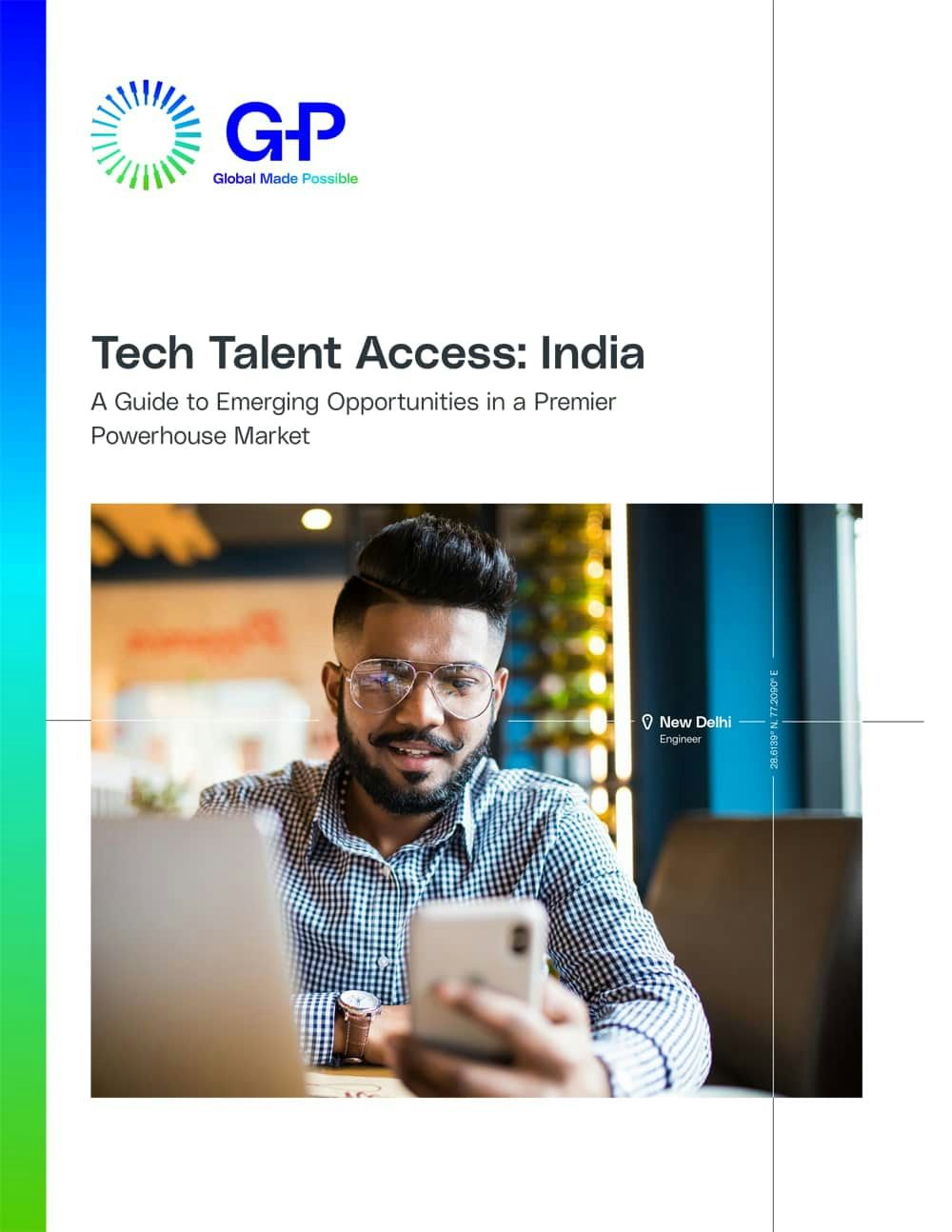מדריך להזדמנויות מתעוררות בשוק Premier Powerhouse
לומר שמאגר הכישרונות הטכנולוגיים של הודו עלה והגעתו תהיה לשון המעטה. המדינה ממשיכה להציע אנשי מקצוע מיומנים, כולל בוגרי מכללות חדשים רבים, אשר מצוידים היטב הזדמנויות גלובליות. האוכלוסייה העצומה והתוססת שלה מייצגת גם שוק חזק וצומח במהירות לעסקים. למעשה, רבים מענקיות הטכנולוגיה בעולם כבר הקימו נוכחות במדינה.
בעוד שאתה יכול לגשת לכישרון של הודו בעצמך, המהירות שלך ואת ההצלחה האולטימטיבית יהיה תלוי אם יש לך את ההדרכה הנכונה. עם יותר מעשור של ניסיון, אנחנו כאן כדי לעזור לחברות כמו שלך למצוא, לשכור ולנהל אנשי מקצוע בתחום הטכנולוגיה ברמה עולמית באחד השווקים הגלובליים הבולטים ביותר.
בספר האלקטרוני הזה תגלו:
- מדוע כישרון הטכנולוגיה של הודו מבוקש מאוד ברחבי העולם?
- אילו אזורים מציעים את אנשי המקצוע הטכנולוגיים הטובים ביותר עבור החברה שלך.
- כיצד לגשת לכישרון של הודו במהירות ובתאימות.
אודותינו
G-P עוזרת לחברות בצמיחה לממש את מלוא הפוטנציאל שלהן בכך שהיא מאפשרת להן להקים צוותים גלובליים בעלי מיומנות גבוהה בתוך ימים במקום חודשים. באמצעות חבילת מוצרי התעסוקה הגלובלית שלנו, המבוססת על SaaS, הניתנת להתאמה אישית מלאה, אנו עוזרים למצוא, לשכור, לעלות למטוס, לשלם ולנהל חברי צוות, במהירות ותוך ציות, להרחיב את הזדמנויות הצמיחה לכולם, בכל מקום – ללא הטרחה של הקמת חברות בת או סניפים מקומיים. אנו מקשרים בין הטכנולוגיה המגיבה ביותר בתעשייה לבין מומחיותנו ברמה עולמית בתחום המשפט, משאבי אנוש ומסים, כדי לתמוך בצמיחה שלך ולהדריך אותה, בכל מקום בעולם.
G-P: Global Made Possible







